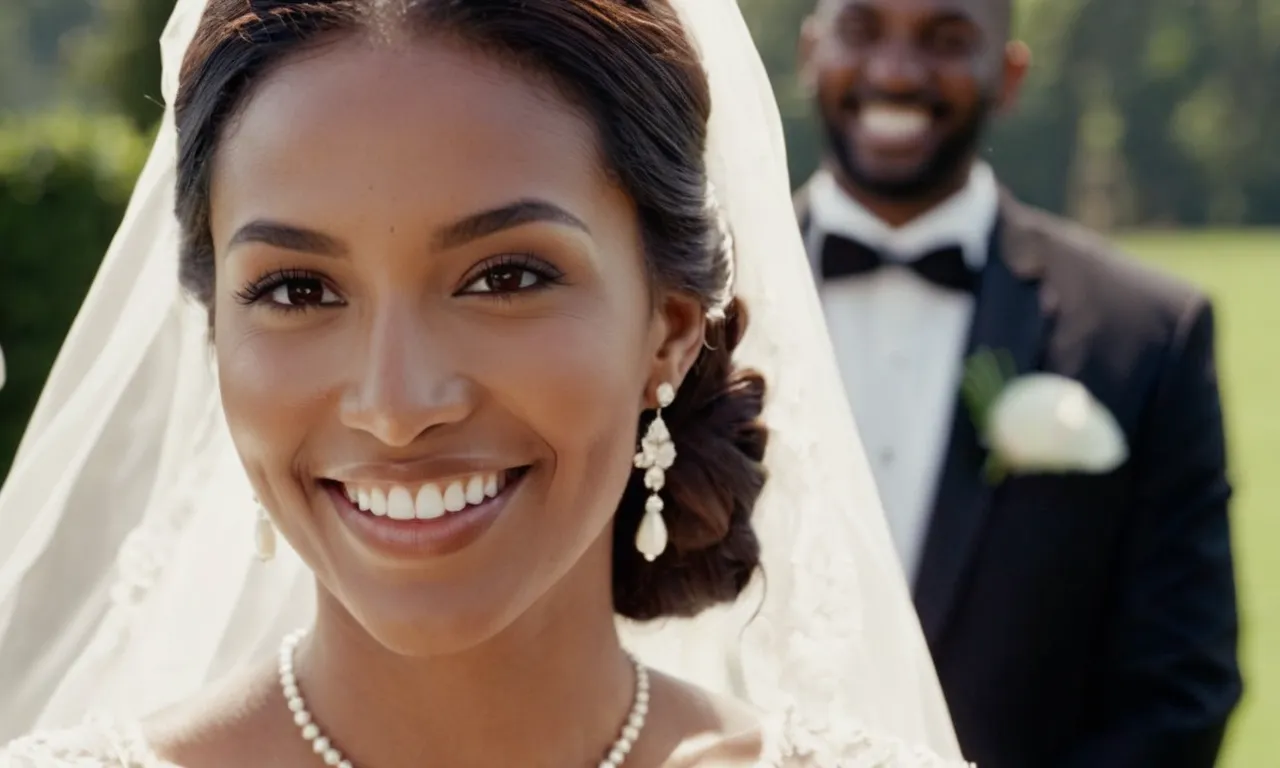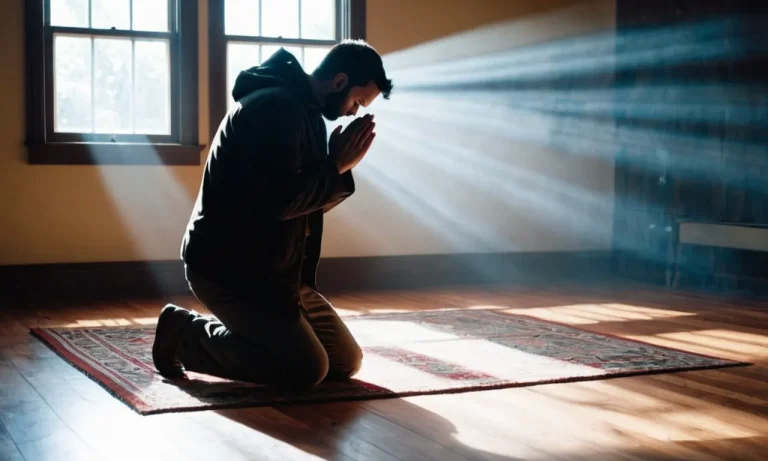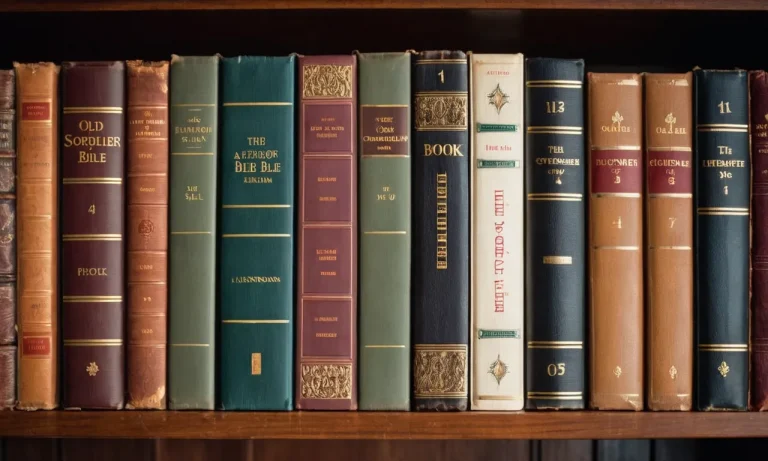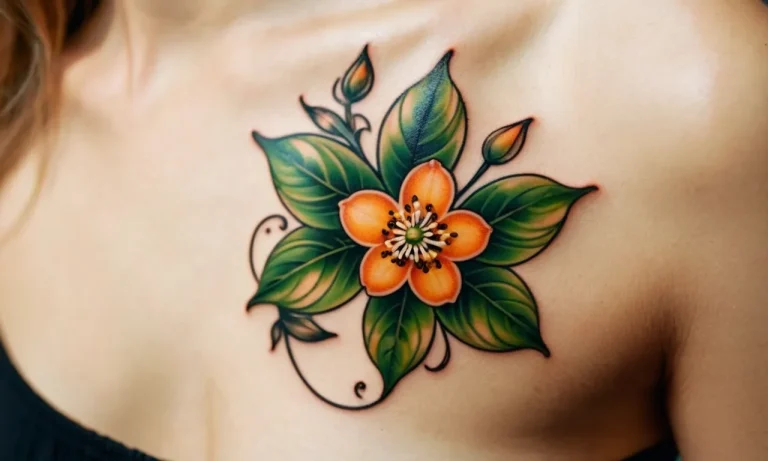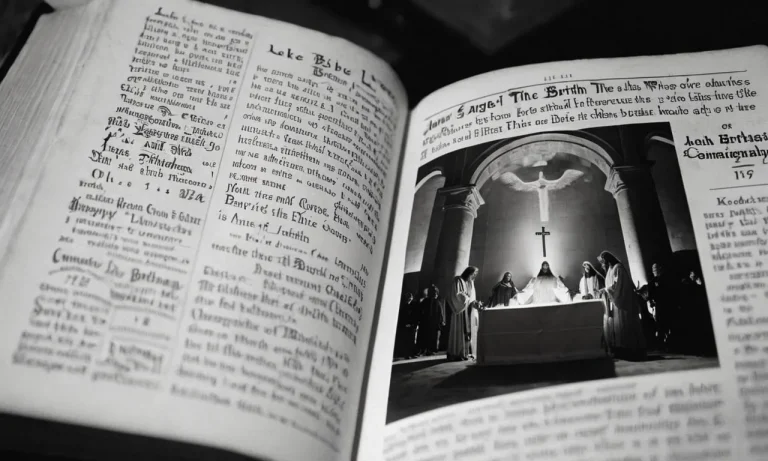What Does The Bible Say About White Wedding Dresses?
If you’ve ever wondered what the Bible says about wearing white wedding dresses, you’re not alone. For centuries, white gowns have been a staple for brides, symbolizing purity and new beginnings.
If you’re short on time, here’s a quick answer: The Bible does not specifically mention the tradition of brides wearing white wedding dresses. However, white clothing is referenced as a symbol of purity, righteousness, and celebration at various points throughout Scripture.
Biblical Symbolism of the Color White
Purity and Righteousness
In the Bible, the color white often symbolizes purity, righteousness, and holiness. For example, in Daniel 7:9 it states that the Ancient of Days was dressed in “garments as white as snow” signifying God’s divine purity and righteousness.
Revelation 19:8 describes the Bride of Christ (the church) being clothed in “fine linen, bright and clean” representing the righteous acts of the saints. White garments are also used in visions of heavenly beings highlighting their state of absolute moral perfection before God (e.g.
Matthew 28:3, John 20:12).
This symbolism stems from the basic color psychology where white represents cleanliness and an undefiled state. As such, it is often associated with new beginnings, forgiveness of sins, and spiritual transformation.
For instance, Isaiah 1:18 declares though “your sins are like scarlet, they shall be as white as snow.” Here, the color vividly depicts the cleansing and redemption believers can find in God.
Victory and Celebration
The color white in the Bible also evokes images of victory, celebration, and blessing. For example, when describing the end times, Revelation depicts believers who endured persecution and remained faithful being given white robes of victory (Revelation 7:9,13).
Their long white robes symbolize them overcoming adversity and the judgment they faced.
White clothes are also worn during celebratory events in the Bible. Ecclesiastes 9:8 advises to “let your garments always be white” as a metaphor for enjoying life. Esther 8:15 describes the Jews being joyful, honored, and celebrating while dressed in white after their deliverance.
Here, the vibrant white clothes visually underscore the jubilant mood.
Similarly, in many ancient near eastern cultures, white garments were used during festivals, weddings, and triumphal processions (Source). So white retains festive, celebratory connotations throughout Scripture.
The Origin of the White Wedding Dress Tradition
Queen Victoria Sets a Precedent
The tradition of wearing a white wedding dress is commonly credited to Queen Victoria’s choice to wear a white gown when she married Prince Albert in 1840. As the Queen of England at the time, Victoria’s fashion choices were closely watched and copied, making her an extremely influential figure.
Her lace-trimmed white gown spawned an immediate trend among socially elite brides to wear white rather than traditional wedding colors like red or gold. While Queen Victoria was not the first to wear white at her wedding, she did set a precedent that fundamentally shifted wedding fashions.
Prior to the Victorian era, brides simply wore their best dress or gown on their wedding day, regardless of color. White was not commonly associated with virginity or purity until Victoria popularized it.
However, some historians argue that Victoria was inspired by the white gown she wore at her coronation ceremony in 1838. She may have wanted to emulate the virginal purity expected of a royal monarch. Either way, Victoria cemented white as the quintessential bridal color for generations to come.
The White Dress Becomes Popularized
In the decades after Queen Victoria, the white wedding dress gained steadily in popularity and cultural significance. As mass production made white fabrics and lace more affordable, even middle-class brides were able to wear white gowns.
The elegant white gown came to symbolize purity, virginity, and prosperity. By the early 20th century, wearing white was an expected tradition, cementing it as a cornerstone of the modern wedding.
Hollywood films in the 1950s and 1960s further romanticized the white wedding dress, featuring stunning white gowns in iconic wedding scenes. Celebrity influencers like Grace Kelly and Jacqueline Kennedy helped drive the trend through the 1950s and 60s.
Advances in sewing technology enabled more elaborate silhouettes with long trains and intricate beading. Today, white dresses make up the vast majority of wedding gown sales, though some modern brides buck tradition in wearing blush pinks, champagne colors, or even black.
Queen Victoria’s choice ignited a fashion craze that shaped wedding traditions for generations. Her majestic white dress set the precedent for the modern white wedding gown as a symbol of social status, purity, and bridal ideals.
Though white was not originally associated with weddings, it is now an indispensable bridal tradition.
Biblical Principles for Marriage
Leaving Parents to Become One Flesh
The Bible teaches that in marriage, a man and woman leave their parents and join together as “one flesh” to form a new family unit (Genesis 2:24). This speaks to the special lifelong bond and commitment that is established in marriage.
When a man and woman marry, their primary loyalty and responsibility shifts from their parents and family of origin to their new spouse. While maintaining healthy relationships with extended family is still important, the marital relationship takes priority.
Becoming “one flesh” encompasses the intimate physical union between husband and wife, but also the joining of their lives, goals, finances, and futures. It is a profound and sacred union where two become one.
Lifelong Commitment and Fidelity
The Bible makes it clear that marriage is intended to be a lifelong, faithful partnership between a man and woman. Vows spoken at a wedding often reflect themes of commitment and faithfulness found in passages like Malachi 2:14-16.
Marriage serves as an earthly picture of Christ’s relationship with the church (Ephesians 5:32), where Christ faithfully loves, leads, serves, and cherishes the church. The expectation for married couples is mirror this faithful, covenant love.
Practicing virtues like patience, kindness, humility, and forgiveness help protect the marriage bond. Guarding against adultery and lustful thoughts strengthen faithfulness, while regular quality time serves to nurture intimacy and friendship.
With God at the center, a lifelong marriage commitment provides spouses the security and support to grow, mature and fulfil their life’s purposes as one.
Alternative Perspectives on Wedding Attire
Focusing on Inner Beauty
In recent years, there has been a growing movement to focus more on inner beauty rather than outward appearances. Many couples are opting for more simple, understated wedding attire that allows their inner light to shine through. Here are some perspectives on focusing on what’s inside:
Some couples are choosing to have less extravagant weddings and put more money towards building their lives together or donating to charitable causes. They want to focus on their commitment and values rather than materialism.
These couples may opt for more casual wedding clothes or vintage, upcycled outfits.
Other couples are moving away from the pressure to have the perfect dream wedding. They realize that no one and nothing is perfect, so they focus on celebrating imperfection. These brides may feel liberated wearing a dress that is unique rather than a traditional white gown.
Many couples are also prioritizing sustainability with natural fabrics and ethical manufacturing. Second-hand or borrowed dresses align with their values of reusing resources and moving away from overconsumption.
Some brides choose colored dresses that express their personality rather than follow the traditional white. Their choice reflects their inner spirit rather than conforming to expectations.
While inner beauty is paramount, outward appearances still matter on your wedding day. The key is finding a balance between expressing your true self while still feeling beautiful and confident.
Customs and Culture
Wedding attire is deeply ingrained in customs, culture and meaning. Here are some interesting examples of how culture impacts wedding fashion choices:
- In many Asian cultures, red is considered the luckiest wedding color representing love and prosperity. Chinese brides often wear red dresses.
- Indian brides traditionally wear red or pink saris that show their midriff. Intricate embroidery and gold accents signify marital status and wealth.
- Japanese brides may don the traditional all-white kimono called a shiromuku that symbolizes purity.
- Many African brides opt for brightly colored vitenges or kangas that represent the vibrant prints of their heritage.
In the Western world, Queen Victoria began the white wedding dress tradition in 1840. Before that, brides simply wore their best dress or a practical dark color that could be reused. White was a symbol of wealth since it was hard to keep clean.
Today, each bride’s dress reflects a mix of personal choice, family traditions, regional customs and fashion trends. More women are pushing back against restrictive ideals and instead choosing wedding clothes that authentically align with their cultural identity.
While everyone appreciates beautiful wedding fashions, focusing less on appearances allows the inner radiance and meaningful cultural traditions of marriage to shine through.
Conclusion
While the Bible does not explicitly mention brides wearing white wedding dresses, the symbolism of purity and celebration aligned with a wedding ceremony comes through in various Scriptural passages. The white gown has become a treasured tradition for many brides over the past two centuries, though Christians differ in opinions on how much importance to place on outward appearances versus the heart and commitment behind marriage vows.
Ultimately, every couple must seek God’s wisdom and principles first when planning their special day.

